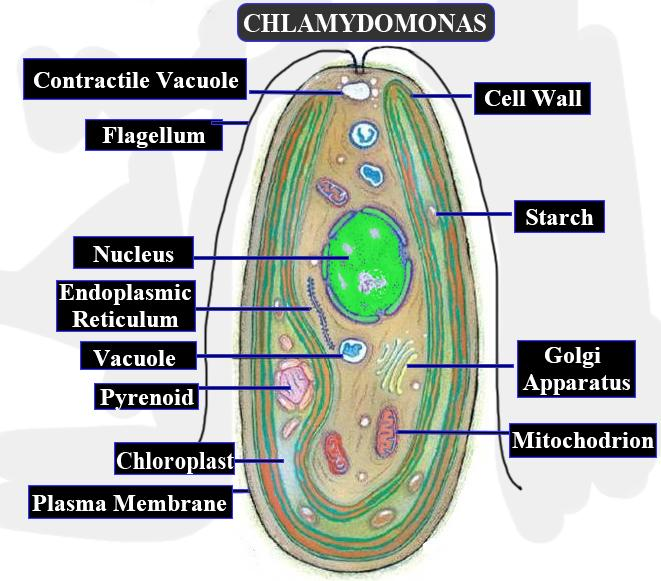Answer
390k+ views
Hint: They are a unicellular organism in which a single cell constitutes the whole organism. They are a large genus and are found almost in all places. It is mainly found in freshwater rich in nitrogen salts and organic matter.
Complete answer:
In Chlamydomonas, sexual reproduction occurs by isogamy, anisogamy, or oogamy. In Isogamy the gametes are of similar size and shape. These gametes are not classified as male or female. It is observed in Chlamydomonas. Anisogamy is the fusion between two gametes which are either dissimilar in size or in both size and morphology. It is observed in Chlamydomonas. Oogamy is a type of anisogamy. The male gamete is smaller in size than the female gamete. All of these are observed in Chlamydomonas.
Additional Information: Morphology features of Chlamydomonas
- Motile unicellular algae.
- Generally oval.
- Cell wall is formed from glycoprotein and non-cellulosic polysaccharides rather than cellulose.
- Two anteriorly inserted whiplash flagella
- Contractile vacuoles are near the bases of flagella.
- Prominent cups or bowl-shaped chloroplast is present.
- The nucleus is enclosed during a cup-shaped chloroplast.
- Eyespots present within the anterior portion of the chloroplast.
- They are generally found in habitats rich in ammonium salt.
So, the correct answer is ‘Chlamydomonas’.
Note: It appears that isogamy was the primary stage of sexual reproduction. In several lineages (plants, animals), this type of reproduction independently evolved to anisogamous species with gametes of male and female types to oogamous species during which the female gamete is extremely much larger than the male and has no ability to move.

Complete answer:
In Chlamydomonas, sexual reproduction occurs by isogamy, anisogamy, or oogamy. In Isogamy the gametes are of similar size and shape. These gametes are not classified as male or female. It is observed in Chlamydomonas. Anisogamy is the fusion between two gametes which are either dissimilar in size or in both size and morphology. It is observed in Chlamydomonas. Oogamy is a type of anisogamy. The male gamete is smaller in size than the female gamete. All of these are observed in Chlamydomonas.
Additional Information: Morphology features of Chlamydomonas
- Motile unicellular algae.
- Generally oval.
- Cell wall is formed from glycoprotein and non-cellulosic polysaccharides rather than cellulose.
- Two anteriorly inserted whiplash flagella
- Contractile vacuoles are near the bases of flagella.
- Prominent cups or bowl-shaped chloroplast is present.
- The nucleus is enclosed during a cup-shaped chloroplast.
- Eyespots present within the anterior portion of the chloroplast.
- They are generally found in habitats rich in ammonium salt.
So, the correct answer is ‘Chlamydomonas’.
Note: It appears that isogamy was the primary stage of sexual reproduction. In several lineages (plants, animals), this type of reproduction independently evolved to anisogamous species with gametes of male and female types to oogamous species during which the female gamete is extremely much larger than the male and has no ability to move.

Recently Updated Pages
Basicity of sulphurous acid and sulphuric acid are

What is the stopping potential when the metal with class 12 physics JEE_Main

The momentum of a photon is 2 times 10 16gm cmsec Its class 12 physics JEE_Main

Using the following information to help you answer class 12 chemistry CBSE

Which of the following would not be a valid reason class 11 biology CBSE

Why should electric field lines never cross each other class 12 physics CBSE

Trending doubts
Difference between Prokaryotic cell and Eukaryotic class 11 biology CBSE

Difference Between Plant Cell and Animal Cell

Fill the blanks with the suitable prepositions 1 The class 9 english CBSE

Change the following sentences into negative and interrogative class 10 english CBSE

Give 10 examples for herbs , shrubs , climbers , creepers

What organs are located on the left side of your body class 11 biology CBSE

Write an application to the principal requesting five class 10 english CBSE

What is the type of food and mode of feeding of the class 11 biology CBSE

Name 10 Living and Non living things class 9 biology CBSE



